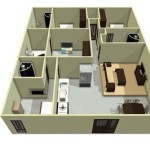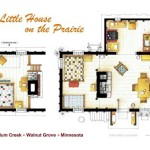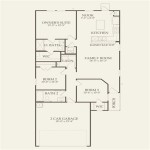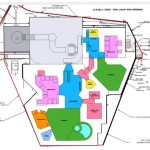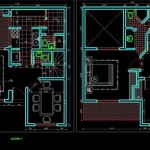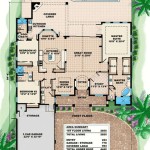```html
Bat House Plans: A Deep Dive into Single Chamber Designs
The global bat population faces numerous challenges, including habitat loss, disease, and misconceptions leading to persecution. Providing artificial roosting habitats, such as bat houses, is a proactive step in conservation efforts. Among the various types of bat houses, the single-chamber design offers a relatively simple and effective method for attracting bats. This article will explore the nuances of single-chamber bat house plans, offering a comprehensive understanding of their construction, placement, and benefits.
Single-chamber bat houses, as the name suggests, feature a single vertical cavity where bats can roost. This design is generally easier and less expensive to construct compared to multi-chambered structures. The simplicity makes it a popular choice for hobbyists, educators, and conservation groups seeking to enhance local bat populations. While less complex, a well-designed and properly placed single-chamber bat house can successfully attract and support a colony of bats.
Understanding the Advantages of Single-Chamber Bat Houses
The primary advantages of single-chamber bat houses stem from their ease of construction and cost-effectiveness. This makes them accessible to a wider audience, encouraging broader participation in bat conservation efforts. The simplicity of the design also reduces the potential for construction errors that might render a more complicated multi-chamber bat house unusable by bats. Further, single-chamber houses can be easily mounted on buildings or poles, offering flexibility in placement to optimize sun exposure and protection from predators.
Single-chamber bat houses are particularly suitable for attracting smaller bat colonies or solitary bat species. While multi-chamber houses can accommodate larger populations, a single-chamber house might be sufficient for establishing a new colony or supplementing existing roosting habitat. The reduced size also makes these houses easier to manage and monitor, allowing for regular inspections and maintenance.
It is important to acknowledge the limitations of single-chamber bat houses. Their smaller capacity compared to multi-chamber designs restricts the size of the colony they can support. This may not be suitable for areas with high bat populations or where a larger roost is desired. Therefore, the choice between a single-chamber and multi-chamber bat house depends on the specific goals and the local bat population dynamics.
Key Considerations in Single-Chamber Bat House Design
Several critical design elements influence the success of a single-chamber bat house. These include the dimensions of the roosting chamber, the width of the entrance, the type of wood used, and the overall construction quality. Neglecting these factors can significantly reduce the likelihood of attracting bats.
The depth of the roosting chamber should typically range from 20 to 30 inches. This allows bats to cluster together for warmth and provides ample space for maneuvering. The width of the chamber can vary depending on the desired capacity, but a minimum of 18 inches is generally recommended. The entrance should be narrow, typically between ¾ and 1 inch wide, to exclude larger predators. A rough landing surface should be provided below the entrance to facilitate easy entry for the bats. This can be achieved by scoring the wood with horizontal grooves or attaching a piece of mesh.
The choice of wood is also crucial. Untreated, rough-sawn lumber is preferred, as it provides a good gripping surface and avoids the harmful chemicals present in treated wood. Cedar or redwood are excellent choices due to their durability and resistance to decay. However, these can be more expensive than other options. Pine is a more affordable alternative but requires regular maintenance to prevent rot. Avoid using plywood, as it can delaminate and create sharp edges that can injure bats.
Proper ventilation is also essential to prevent overheating. Small gaps at the top of the house, typically ¼ to ½ inch wide, allow for airflow and prevent the accumulation of moisture. The roof should extend several inches beyond the sides of the house to provide protection from rain and sun. Caulking all seams and joints is crucial to prevent drafts and maintain a consistent temperature inside the house.
Placement and Orientation for Optimal Bat House Success
The placement and orientation of the bat house are as important as its design. Bats are sensitive to temperature and sunlight exposure, so careful consideration must be given to these factors. The ideal location provides at least six to eight hours of direct sunlight each day, particularly in the morning. This warms the house quickly and encourages bats to roost early. In cooler climates, orienting the house towards the south or east is recommended to maximize sun exposure. In warmer climates, a southeastern exposure may be preferable to avoid excessive heat.
Mounting the bat house on a pole or building is generally more successful than attaching it to a tree. Trees provide perches for predators, such as owls and snakes, and the dense foliage can block sunlight. Poles offer a clean, unobstructed environment and allow for better control over the orientation of the house. Buildings, particularly those with a southern or eastern exposure, can also be suitable mounting locations. Ensure that the house is mounted at least 12 to 15 feet above the ground to deter predators.
The surrounding habitat also plays a significant role in the success of a bat house. Bats prefer to roost near a reliable water source, such as a stream, pond, or lake. They also require access to foraging areas with abundant insect populations. Avoid placing the bat house near bright lights, as these can disrupt their nocturnal behavior. Minimizing pesticide use in the surrounding area is also crucial, as pesticides can harm bats directly or indirectly by reducing their food supply.
Monitoring the bat house for activity is essential to assess its effectiveness. Look for signs of bat droppings (guano) beneath the house, listen for bat vocalizations at dusk, or observe bats emerging from the house at night. If no bats have occupied the house after one or two years, consider relocating it to a different location with better sun exposure, water access, or foraging habitat.
Maintaining the bat house is crucial for its long-term success. Regularly inspect the house for damage, such as cracked or warped wood, loose seams, or insect infestations. Repair any damage promptly to prevent further deterioration. Remove any wasp nests or other obstructions that may deter bats from roosting. Over time, the interior of the house may accumulate debris, such as guano and insect exoskeletons. Cleaning the house periodically, ideally in the late fall or early winter after the bats have migrated, can help maintain a healthy roosting environment.
By carefully considering the design, placement, and maintenance of a single-chamber bat house, individuals and organizations can make a significant contribution to bat conservation efforts. These simple structures provide valuable roosting habitat for bats, helping to support their populations and the vital ecosystem services they provide, such as insect control and pollination.
```
Single Chamber Bat House Lonestarwoodcraft Com

Bat Houses Mass Gov

Pin By Ana Silvia On Sobrevivência Bat House Plans Houses
Building A Bat House

Dayroost Single Chamber Plywood Fully Assembled Bat House
Building Homes For Bats

Bat House Construction And Installation
Building A Bat House

Chamber Custom Bat Houses Polly S

Bat House Plans Drawing Fusion 360 Model Build Woodworking Nature Conservation Garden Gift

